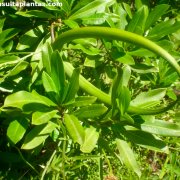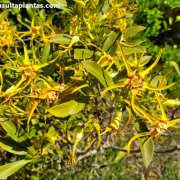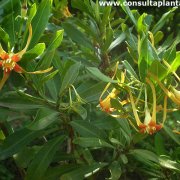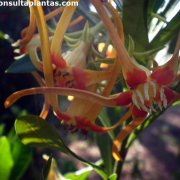Care of the shrub Strophanthus speciosus or Forest poison rope |
|
The genus Strophanthus, family Apocynaceae, includes 40 species of shrubs, small trees and climbing plants native to tropical regions of Africa and Asia. Some species are: Strophanthus speciosus, Strophanthus gratus, Strophanthus aurantiacus, Strophanthus hispidus, Strophanthus alterniflorus. Common names: Corkscrew flower, Forest poison rope, Forest tailflower, Poison rope, Common poison rope. This species is native to southern Africa. They are highly branched plants of shrub, climbing or arboreal bearing that reach 10 meters (32.8 feet) in length. The leaves are lanceolate, leathery in texture and deep green in color. The interesting and curious flowers are scented and yellow with red spots. They bloom in spring. Forest poison rope can be used as isolated specimens (tree), in groups or informal hedges (shrub) or as climbing plants to cover walls, fences or pergolas. Strophanthus speciosus grow in full sun or semi-shade exposure and in hot climates. Forest poison rope does not resist temperatures below 5 ºC (41 ºF). Corkscrew flower prefers well-drained soil; for example a normal garden soil with coarse sand and organic matter. Water regularly so that the soil is always slightly damp; never flood. Fertilize with compost or manure in late winter or fall. Prune lightly after flowering to maintain a compact appearance. If Strophanthus speciosus suffers prolonged drought it can be attacked by aphids. Forest poison rope is propagated from seeds sown in spring in a porous substrate or by cuttings in summer or spring. |
Images of the shrub Strophanthus speciosus or Forest poison rope |
Find plants
Strophanthus speciosus or Forest poison rope | Care and Growing
© 2026 FavThemes





